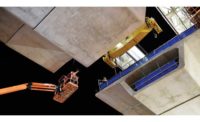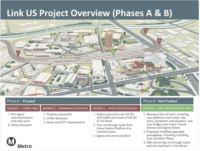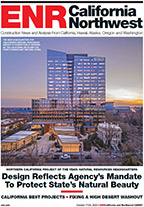Owner: Northwest Rapid Transit
Lead Design Firm | Civil and Structural Engineer: Mott MacDonald/SMEC/KBR JV
General Contractor: John Holland/CPB Contractors
MEP Engineer: WSP
Architect: Hassell
A team from throughout Australia, Europe, Asia and South Africa collaborated to deliver unprecedented levels of mobility and transit-oriented development for Sydney via the new 36-km Sydney Metro Northwest. Australia’s first fully automated railway includes five upgraded stations, 4,000 commuter car parking spaces and eight new stations, including what officials believe is the first of its kind—an underground structure with more than 90% precast elements.
Distinctive canopies for underground and open-cut stations celebrate Australian flora by emulating the shape of two gum leaves connected by a sheer, glazed roof. Collaboration between structural engineers and architects on the canopies resulted in 50% less steelwork used in construction while pushing the boundaries of sustainability.
“The work is fundamentally about connection—connection to place and to people,” says Michael Barron, technical director for transport with Mott MacDonald. “The design was conceived at the scale of the city and delivered through a particular response at each location. There were three drivers: landscape that informs and infuses architectural space, architecture that is intrinsically of the landscape and integrated art that recalls the past, connects the present and reimagines our future.”
There are three underground stations, three open-cut suburban stations and two new elevated stations. Barron says the design team used a “pattern book” of structures, materials and functions for the broader northwest region of Sydney. “Each station and precinct was then given its own identity using subtle shifts of scale, form, palette and hue, responding to the sequential changes in alignment, topography, aspect and street,” he adds.
The team implemented prefabricated elements—precast concrete and steel for the cut-and-cover stations—including the first-ever use in Australia of precast wall elements for soil-retaining applications, Barron says.
He notes that the initial plan was to use crawler cranes traveling 200 m along the cast-in-place station box. “This method would have added additional surcharge on the station walls, increasing their structural size,” he says. Instead, crews used tower cranes with capacities as high as 330 tonnes, enabling them to build the stations quickly and safely. Up to 80% of the main structural elements are prefabricated, including 50-tonne box beams spanning up to 22 m.
The main elements of the “leaf” canopies were also prefabricated and erected on site, adds Barron. Their spans ranged from 40 m to 56 m, with a clear height beneath them ranging between 11 m and 15 m. Placing the canopies with cranes required accurate positioning to allow connection to the four supporting points situated on buttresses. “Once connected to their buttresses, temporary propping was secured to allow installation of the bracing elements,” says Barron. Use of prefabrication for long-span trusses resulted in more than a 40% reduction in steel weight, he says.
Two large moveable gantries mounted with six drills bored more than 80,000 holes throughout the 30 km of tunnel for services, walkways and overhead wiring, according to Northwest Rapid Transit (NRT), the project concessionaire.
Community Context
The $2.6-billion public-private partnership contract was awarded to NRT in 2014. After 4½ years of nearly $5 billion in design and construction, the line opened to customers in May 2019. The P3 includes a 15-year maintenance and operations contract held by Metro Trains Sydney (MTS), a joint venture between MTR Corp., John Holland and UGL. MTS is required to meet strict performance targets, including 98% on-time performance, and having trains available for riders 99.5% of the time, according to NRT.
The line is Australia’s first fully automated metro network. According to NRT, it is also the first in the country to secure a Forest Stewardship Council project certification for use of sustainably sourced wood in the construction of the stations.
“One of the biggest challenges on the project was the length of the alignment and the varied stakeholder interests,” says Kirsten Giunta, communications and sustainability manager for NRT.
The construction footprint covered 41 km, including 14 major worksites located in semi-rural, built-up residential, retail and commercial areas and alongside suburban bushland. More than 600 community notifications and newsletters were distributed, Giunta says.
The new system incorporates some 13 km of an existing rail line and also utilized beams from the former Sydney monorail, a 3.6-km, 25-year-old tourist attraction that ceased operations in 2013, Barron notes. “The monorail beams obtained from dismantling were used for one last time for a temporary road bridge over a station box excavation, before finding their way to the recycling plant,” he says. “It was a symbolic pass of the baton to a more modern way of transport.”








